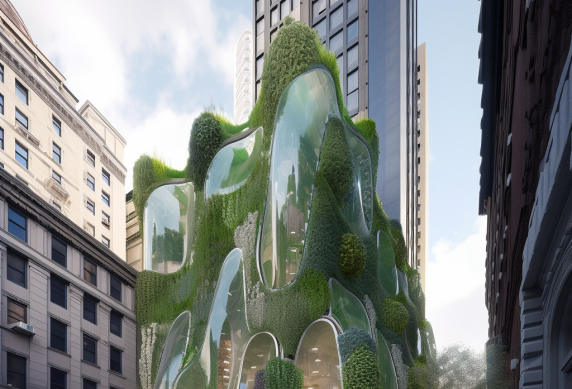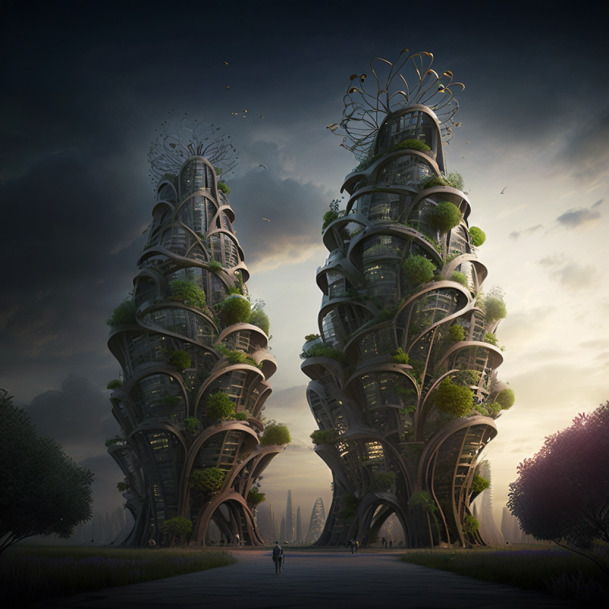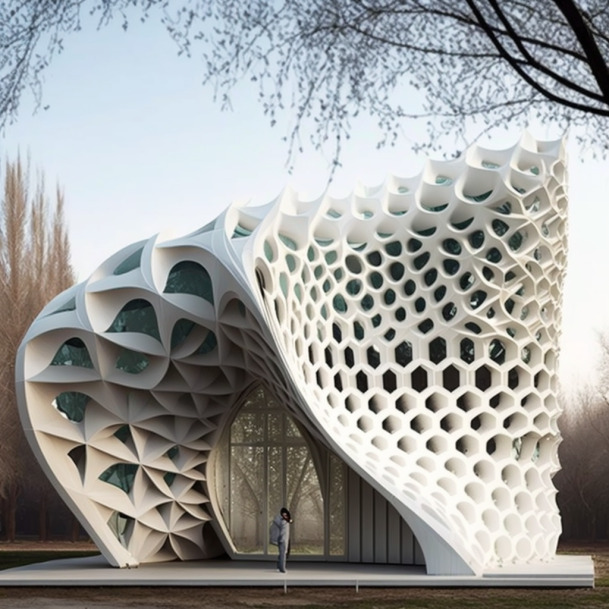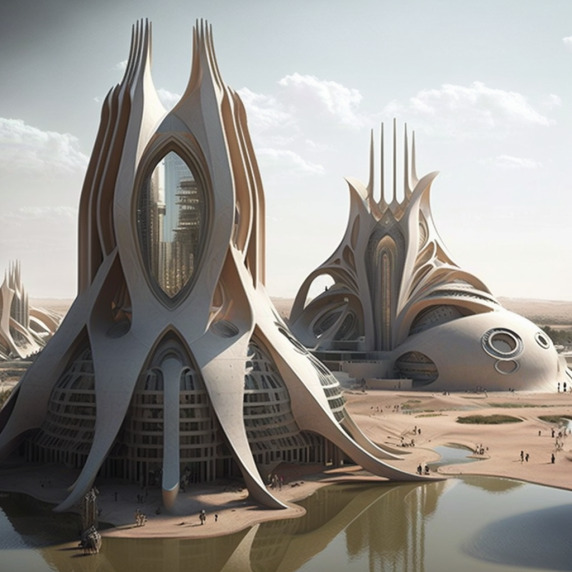Text by Daniela Silva

AI (Artificial Intelligence) is a branch of computer science that focuses on creating machines or software that can perform tasks that would normally require human intelligence. This involves designing algorithms, statistical models, and other techniques that enable machines to learn from data, recognise patterns, and make decisions based on that learning. In simple terms, AI gives a computer or robot the ability to process and learn like a human, so it can make decisions, solve problems, and perform tasks that normally require a human’s intelligence.
AI will not replace you. A person who’s using AI will replace you.
You may have come across this statement somewhere on the internet. It emphasizes the importance of developing skills that can be used with the support of AI technology, which has recently gained popularity in industries affected by the incorporation of this technology.
Despite the recent discussion around it, AI is already present in many aspects of our daily lives, even if we don’t acknowledge it. From Google Maps to self-driving cars and personalized shopping recommendations, AI can transform how we live and work, improving our daily experiences and making our lives more efficient, convenient, and personalised. AI has rapidly evolved over the last few years and is now being integrated into various industries, including Architecture. The use of AI in architecture is an emerging trend that is gaining traction due to its potential to streamline the design process and improve the quality of design.
One of the most exciting and innovative AI tools being used in architecture is the generative models. DALL-E, Midjourney and Stable Diffusion are examples of generative AI text-to-image models that have been developed in recent years. These AI tools can generate high-quality, photorealistic 2D images of buildings and generate new and innovative designs, making them powerful tools for architects. Generative models are a machine learning algorithm that learns to generate new data similar to the data it was trained on.
The algorithm is composed of two parts: a generator and a discriminator. The generator creates new data based on the patterns it learned from the original dataset, while the discriminator tries to determine if the data is real or fake. Through a process of trial and error, the generator tries to create data that is realistic enough to fool the discriminator, while the discriminator gets better at identifying fake data. Over time, the generator becomes more skilled at creating realistic data, and the discriminator becomes more skilled at identifying fake data. This result in a system that can create new data that looks like it came from the original dataset.
Putting it in simple terms, imagine you have a dataset of pictures of cats. A generative model would analyze the features of those pictures, such as the color and shape of the cats, and then use that information to generate new pictures of cats that look like they could belong in the original dataset. AI tools such as DALL-E, Midjourney and Stable Diffusion in architecture have brought about a revolutionary change in the industry. One of the main advantages of using these tools is the ability to generate new and innovative designs that are not limited by the creativity of the architect. With the help of AI, architects can explore new design solutions that were previously not possible, providing them with fresh perspectives and novel design ideas.
Its use in architecture allows architects to generate unique, innovative, and often surprising designs. These tools are trained on a large dataset of existing designs, which enables them to learn the underlying patterns and styles of architecture. Once trained, the tools can generate new designs that blend and combine different architectural styles in ways that are not immediately obvious to the human eye. The generated designs can provide architects with new and unique design solutions that they may not have thought of otherwise.
Traditionally, architects would need to manually create multiple design options to explore different possibilities, which can be time-consuming and resource-intensive. With the help of AI tools like DALL-E, Midjourney and Stable Diffusion, architects can generate multiple design options quickly and easily. These AI tools use machine learning algorithms to generate 2D images from textual descriptions. This allows architects to explore different design options and quickly identify the best solution for a given project.
Architecture is an art form that requires both technical skills and creative thinking. And creativity is essential in architecture. Generative models have become a game-changer in the field of architecture by enabling architects to extend their creativity. Instead of relying solely on their own creativity, architects can input their design preferences, constraints, and requirements into the system, and the model can generate designs that meet those specifications. This collaboration between humans and machines can lead to new and unique design solutions that would not have been possible otherwise.




Undeniably, they have the potential to revolutionize how architects create visual representations of their designs. Instead of spending hours creating 3D models or sketches, architects can input textual descriptions of their designs, and AI can generate images that accurately represent them.
It is important to note that generative models do not replace the architect’s role in the design process. Instead, they are a tool that architects can use to extend their creativity and generate new design ideas. Architects are still responsible for defining the design problem, inputting design preferences, constraints, and requirements, and ultimately selecting the final design. Acknowledging the rapidly evolving nature of this field, the independent online platform for architectural education, DigitalFUTURES has emerged to play a crucial role in the design profession.
DigitalFUTURES is an online platform that provides a unique educational experience for architects, designers, and students to learn and collaborate on digital technologies in architecture. The platform offers a variety of educational resources, including workshops, tutorials, and courses. DigitalFUTURES has been making significant strides in advancing the education of digital technologies in architecture and pushing the boundaries of what is possible in the field. One of the significant contributions of DigitalFUTURES has been their effort to create a network of professionals and students interested in the intersection of architecture and digital technology.
Through the platform, individuals worldwide can connect and collaborate, sharing knowledge and expertise to advance the field further. By fostering a community of like-minded individuals, DigitalFUTURES has created a space where people can learn and grow together. By staying ahead of the curve and continually exploring new technologies, DigitalFUTURES is playing an essential role in shaping the future of architecture. Recently, they have launched a free, comprehensive AI tutorial series designed specifically for designers. This ground-breaking course is the world’s first of its kind, offering a step-by-step journey into the world of AI for designers of all skill levels.
The course features a team of renowned AI designers worldwide, coming together to share their knowledge and expertise. It consists of 8 sessions, including 5 tutorial sessions, with each tutorial featuring 2-3 mini-tutorials. The course begins at an introductory level and progresses to more advanced techniques. It ranges from the basics of AI, to the latest AI models such as MidJourney and DALLE, as well as prompt engineering and other advanced techniques.
All sessions are openly available on YouTube for free access to anyone who wants to learn. This is a perfect opportunity to expand skills and knowledge in the world of AI. The use of AI tools in architecture is still in its early stages, but the potential benefits are significant. AI tools can save architects time and effort in the design process and improve the quality of design. With the development of more advanced AI tools, the future of architecture looks promising.
The rapid evolution of AI tools and generative models has brought about concerns that these technologies will eventually replace human architects. However, the reality is that AI is not here to replace architects. Instead, it is up to architects to keep up with the evolution of such tools and make themselves relevant in the industry. The role of the architect remains critical in the design process. Architects have a unique set of skills and expertise that cannot be replaced by AI tools, such as intuition and empathy. Architects are trained to think critically about the design problem, identify the client’s needs and desires, and create functional, aesthetically pleasing, and emotionally engaging solutions.
To remain relevant in the industry, architects must embrace the evolution of AI tools and generative models and incorporate them into their design process. Architects should view these technologies as tools that can enhance their skills and capabilities rather than as a threat to their profession. They should also be proactive in learning about these technologies and seeking out training opportunities to stay up-to-date with the latest advancements.





